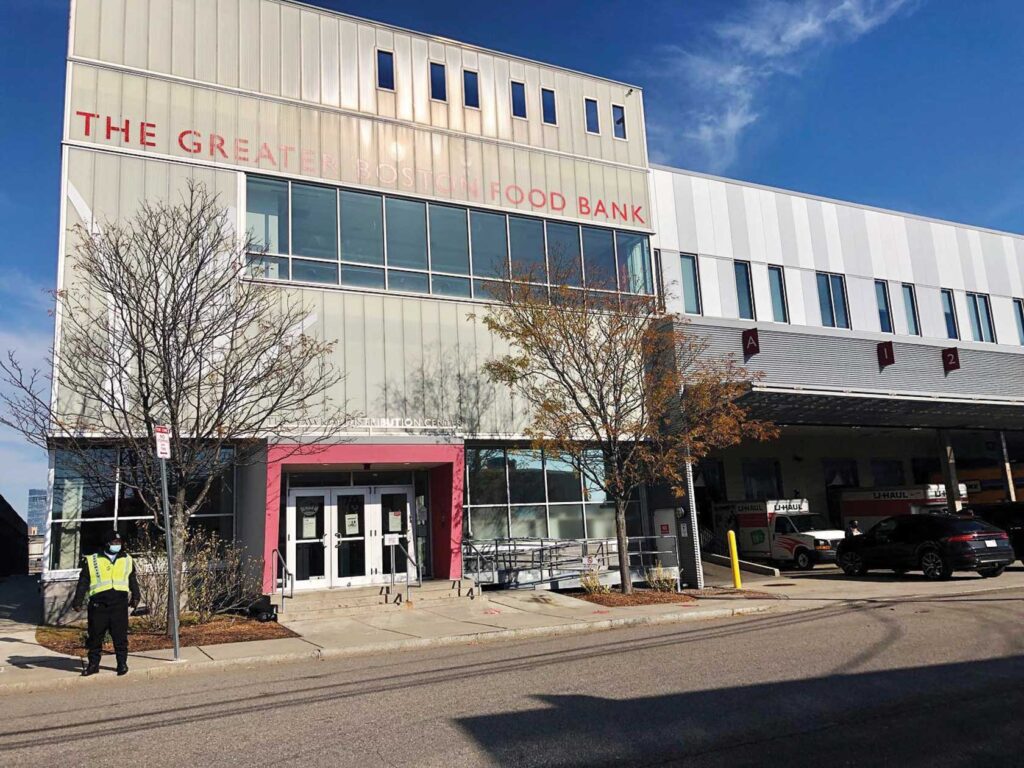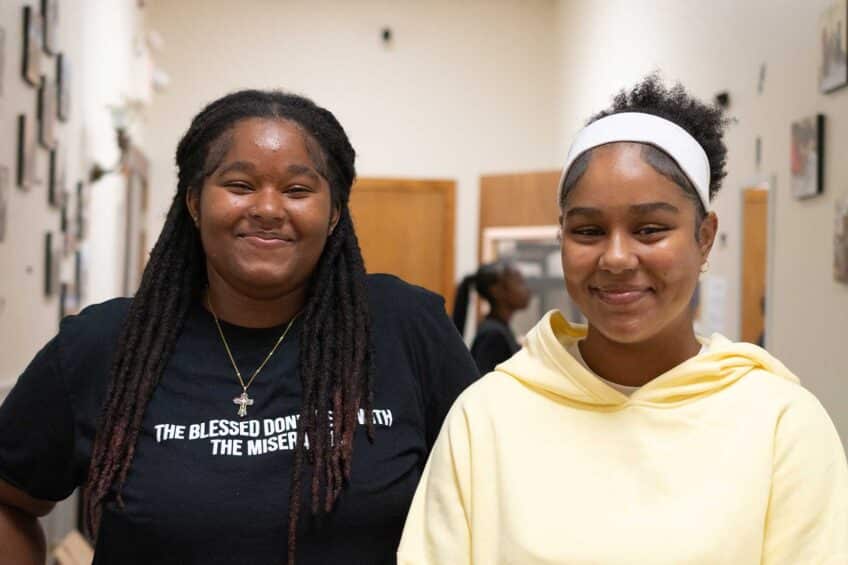New report finds one in three Bay Staters still face food insecurity
34% of households are food insecure, continuing four-year trend as city, state, nonprofits seek solutions

At the start of the COVID-19 pandemic, the number of residents in the state facing food insecurity shot up. Those numbers have yet to go down, according to a new report, released May 29, from the Greater Boston Food Bank. The report found that, in 2023, a third of households statewide faced food insecurity. It was the fourth year in a row that the statistics hovered around one-in-three.
“Food insecurity is a devastating issue,” said Catherine D’Amato, president and CEO of the Greater Boston Food Bank. “It can limit capabilities and limit a child’s growth; it can limit an elder’s life; it can limit our capability to be productive in the workplace and impacts school and work and family.”
The report, the fourth annual study released by the organization, painted a dismal picture of food insecurity in the state.
According to the study, 1.9 million adults reported household food insecurity in 2023. Households of color were hit especially hard — 51% of Black households and 56% of Hispanic households reported not having enough food, compared to 30% of white households.
“What the report is, is really another installment to the mounting data that points to deep-rooted racial inequities in everything from housing, to hunger, to health care,” said Elsie Tavares, chief community health and health equity officer at Mass General Brigham.
The numbers are hard but aren’t a surprise, said Aliza Wasserman, who heads the city’s Office of Food Justice.
“While we’re looking to impact the food system, we also see a critical, day-to-day, high level of need that has been increasing,” she said. “Everything that we do, we’re looking to try to address these needs that folks have in the community, folks of all ages, for healthy food that is going to be the kind of food that their families want and need.”
She said that, per statistics shared with the city by the Greater Boston Food Bank, about 44% of Boston residents experienced food insecurity last year. Among Black and Latinx residents, that number reached about 60% in the city.
While representatives from the Greater Boston Food Bank said the numbers are saddening, the fact they remained steady from last year’s report offers a small positive, as many COVID-19-era programs designed to support residents during the pandemic ended within the past year.
“Whatever those subsidies were or whatever that relief was in that period of time, it’s gone,” D’Amato said. “We are stable, now with less resources in the system which means there have been some improvements.”
Part of that has been steps taken by the state government to close some gaps, like funding universal school meals in the state budget in September, said Lauren Fiechtner, one of the authors of the report and the director of nutrition at Mass General for Children.
“In some ways, for it to stay at one-in-three points to all these things that have happened in the state of Massachusetts,” she said.
The report also highlighted other solutions, like health care providers screening for food insecurity as part of regular care in an attempt to connect more residents to local food banks or programs like the Supplemental Nutrition Assistance Program or the federal supplemental nutrition program for women, infants and children, known as WIC.
D’Amato said those efforts, treating food as medicine, aren’t new, but have been receiving increased attention in recent years as health care systems turn a greater focus to prevention rather than treatment.
“If you can get the right food to address the right chronic diseases or the specific chronic diseases, then you can have an outcome of truly moving people from hunger to help,” she said.
According to the report, 25% of respondents reported being screened for food insecurity, up from 22% of respondents in the report the year before. 87% of respondents who were offered resources following a screening used that assistance.
Lissi Guerrero, an East Boston resident, visits a food pantry in Revere once a week that she was referred to through Massachusetts General Hospital’s Revere Health Center.
She started going around the start of the COVID-19 pandemic, when she was asked on a questionnaire if she needed assistance with food. She said the program has helped not only with accessing food but also learning healthier recipes.
It has been an incredible change from her home in Punta Cana, in the Dominican Republic, where she said there’s a lot of fried foods and junk foods. Now, the staff at the food pantry specifically look for vegetables to gift to Guerrero’s 6-year-old daughter, she said.
“They taught me how to cook healthier foods for my four kids and myself,” she said in Spanish. “It’s super excellent for me.”
Tavares said the inclusion of the screening fits with the work of health professionals.
“Tackling and helping to support people with food insecurity and nutrition insecurity is 100% in our lane as the health care system, because it helps us manage chronic conditions,” she said.
Food insecurity can exacerbate other conditions. According to the report, households experiencing food insecurity often face medical challenges including hypertension, obesity and diabetes.
Limited access to food can also have impacts on mental health. Of households in the state experiencing food insecurity, 52% screened positive for anxiety and 42% screened for depression. By contrast, in Boston, 27% of adults reported experiencing persistent anxiety and about 17% experienced persistent sadness as of 2021, according to data from the Boston Public Health Commission.
But the report found that just increasing access to food access programs is not enough. Among SNAP recipients, 64% said the benefits covered only two weeks or less of their food budget. 75% of respondents participating in two or more food assistance programs still reported experiencing food insecurity.
“I was really curious about the layering of programs because I thought, ‘Well, if you layer SNAP, you layer WIC, you layer food pantries, can you get to food security?’” Fiechtner said. “What those with food insecurity said was it’s still just not enough.”
According to the study, on average, families were short $60 per week on covering food expenses making for a difference of about $2,000 a year — the USDA estimates that families with low food security tend to experience it seven months out of the year, rather than all 12.
Locally, Boston is pursuing efforts to convert would-be food waste into food resources to address hunger, Wasserman said. A municipal report, slated to be wrapped up later this summer, is looking at what food is currently being rescued and what food could be rescued to keep it out of the trash and instead helping close gaps in food access.
More broadly, Tavares said that more work around economic mobility is necessary to decrease food insecurity in the state.
“We as the healthcare system can make really important investments, but it’s the reason why policy and continuing to advocate for policies that improve economic mobility and advancement and get people out of poverty is at the root of [addressing] these important social risk factors,” Tavares said.
Guerrero, too, said better job supports would be key to addressing food insecurity.
“If someone has a stable job, something that can sustain them, then they won’t need as much support,” she said. “That’s the first thing we need, as a community.”
Advocates also have their eyes set on other avenues to reduce household costs, something D’Amato said would also help close gaps in families’ budgets and reduce food insecurity. She pointed to the proposed legislation currently at the State House that would aim to make community college tuition free for all Massachusetts residents.
“The expense of the food is so high right now that you’re going to need help, but if you can improve people’s economic status, then that’s going to make a considerable difference,” D’Amato said.






